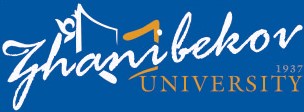Yenilerini kullanarak öğrencilerin işlevsel okuryazarlığının geliştirilmesi inorganik kimya öğretiminde teknoloji
DOI:
https://doi.org/10.47751/Anahtar Kelimeler:
işlevsel okuryazarlık, bilgi teknolojisi, yaratıcı düşünme.Öz
Bu yazıda, öğrenmede işlevsel okuryazarlığı artırmanın yollarını inceleyeceğiz Ortaokullarda inorganik kimyanın. Karşılaştırmalı verilere dayanarak beceri ve bilgiyi kullanan öğrenciler Maddenin bileşimi ve özellikleri hakkında, çeşitli yöntemler kullanarak görevleri yerine getirirler, kendilerininkini geliştirirler Gelecekte dış çevre ile etkileşime girme, değişen yaşama uyum sağlama ve etkili kararlar vermek. Ortaokulda kimya öğretme teknolojileri ve yolları inceleniyor Öğrencilerin yeteneklerini geliştirerek ve geri bildirim sağlayarak öğrenme. İşlevsel görevler okuryazarlık, görevlerin müfredata dayandığını, umut verici bir plana sadece formda olmadığını göstermektedir açık cevapların yanı sıra okuma ve matematik okuryazarlığının, yaratıcı düşüncenin ve bilimsel okuryazarlık. Öğrencinin hedeflerine ulaşma, bilgilerini genişletme yeteneğini geliştirmek ve yazılı metinleri anlama ve kullanma, sosyal hayata katılma, yansıtma fırsatları üzerlerinde okumak da öyle. Doğa bilimlerini öğrenerek ve sorarak bilgiyi öğrenme ve kullanma yeteneği sorular, yeni bilgiler edinerek, doğal olayları anlayarak ve bilimsel kanıtlara dayanarak sonuçlar formüle ederek bilimsel sorunlar için. Öğrencilerin rolün anlaşılmasına dayalı kararlar vermelerine yardımcı olur Dünyada matematik okuryazarlığı ve yapıcı kararlar alınması gereken kararlar almak, Yenilikçi ve etkili çözümlere erişimi göstererek aktif ve düşünen vatandaşlar tarafından.








